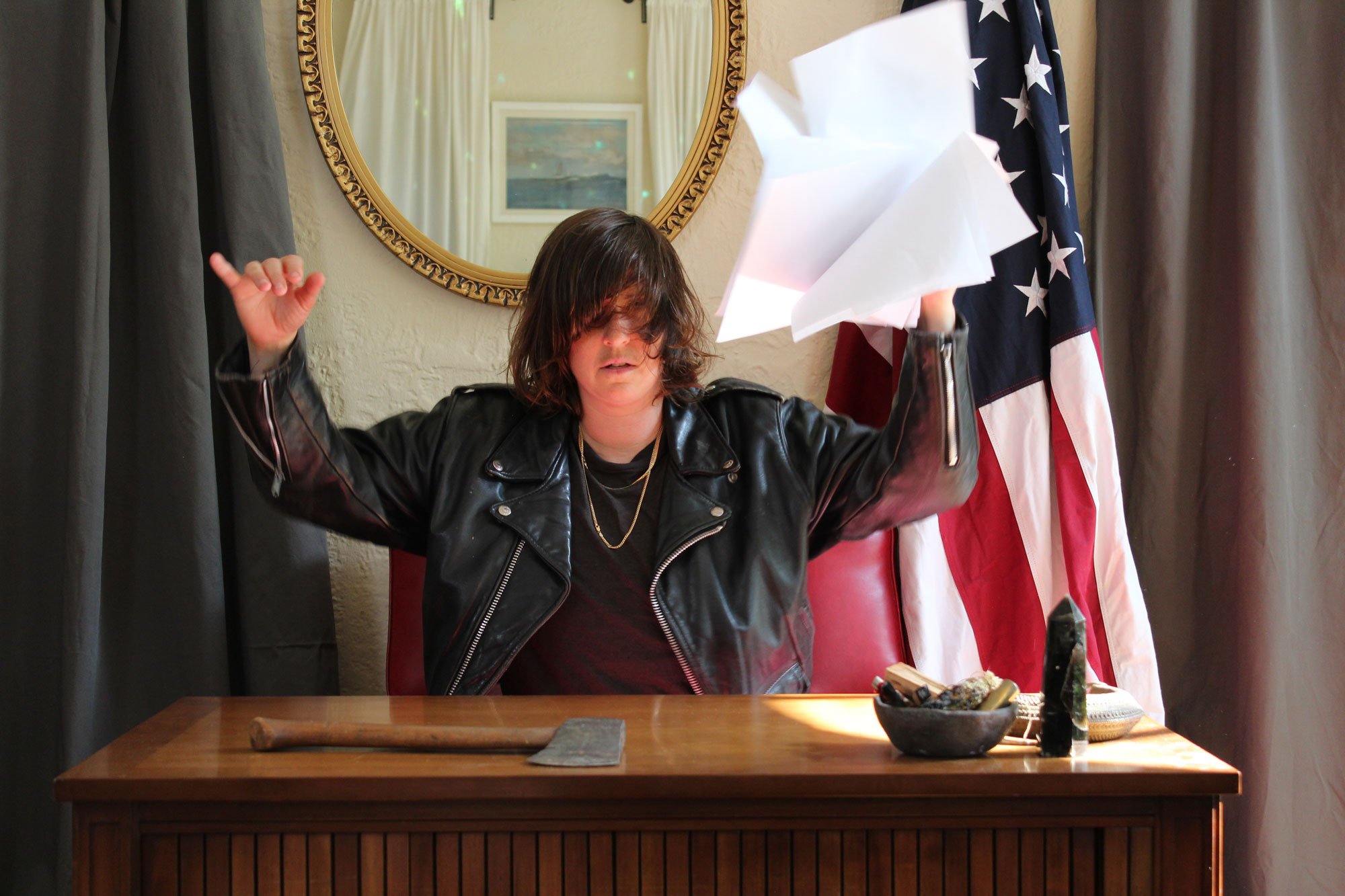American artist Constance Hockaday asked 50 fellow creatives to step into the role of the US president to redefine what leadership looks and sounds like. Here’s her future-forward take on the face of power.
You invited artists to create presidential portraits of themselves. Why?
If you look back at the history of leadership portraiture from medieval times to now there are very predictable common postures that white men stand in, with their right hand on the corner of the desk and the flag behind them. Leadership throughout history has imitated this posturing.
“We can’t expect to shift who holds the power by continuing to perform white male power”
I wanted to bring artists in to make new performances of power and leadership, taking on different stances and wearing different costumes to shift the aesthetics and vernacular of leadership because if we ever hope to have more diversity in our leadership, we need people to have the experience of witnessing somebody that looks like them and talks like them and acts like them in power. We can’t expect to shift who holds the power by continuing to perform white male power.
Artists also recorded their own personal address to the nation. How did that idea come about?
I was inspired by Franklin D. Roosevelt’s Depression-era ‘fireside chats’. Americans were totally disenchanted with democracy at the end of the Hoover presidency and the Great Depression. Roosevelt knew that he had to call on people to participate in democracy and to revive their faith in a collective agreement. He did that by speaking directly to the American people through the radio.
























Before that, the president only spoke to congress, so Americans had never heard the president’s voice and had never been addressed so intimately. It was through this moment of intimacy in our democracy that Roosevelt was able to persuade people to come together around his agenda to fight fascism. Roosevelt was masterful at addressing people’s greatest concerns and helping them understand how they could come together to better the situation. We don’t have that now.
But like most international leaders throughout history, Roosevelt’s policies excluded the majority: Black people and women. And so the idea was to recreate these fireside chats with voices that represent the majority of the nation as a way of updating Roosevelt’s addresses.
Why do we need this project now?
Living through this election is incredibly painful and I wanted people to have a place to go where they could hear sober voices of leadership. People who are engaging their radical imagination about the potential future and who are not just stuck in this really difficult moment. Instead, they are able to imagine what leadership could look like, what the trajectory of our collective agreement could look like. I wanted to offer an antidote.
“It’s all of our responsibilities to figure out how to bring more justice in every way that we can, all the time”
And then there’s the parallels with the economy and the Great Depression, so I commissioned these artists to address the nation, asking them: if democracy is failing us, or we’ve lost our faith in it, what do we put our faith in now? Many artists responded to that.
In what way can art inspire change?
There’s this assumption that artists are special at making change in the world and I think that’s not true. I think that change is happening in every single industry and it’s all of our responsibilities to figure out how to bring more justice into all of our workplaces, and all of our institutions and in every way that we can, all the time. Art is an important ingredient among many other ingredients. It’s one way that we build community… and so is football!
Check out Artists in Presidents for the complete gallery of presidential portraits and national addresses. Contributing artists include Miranda July, Mel Chin and Coco Fusco.
